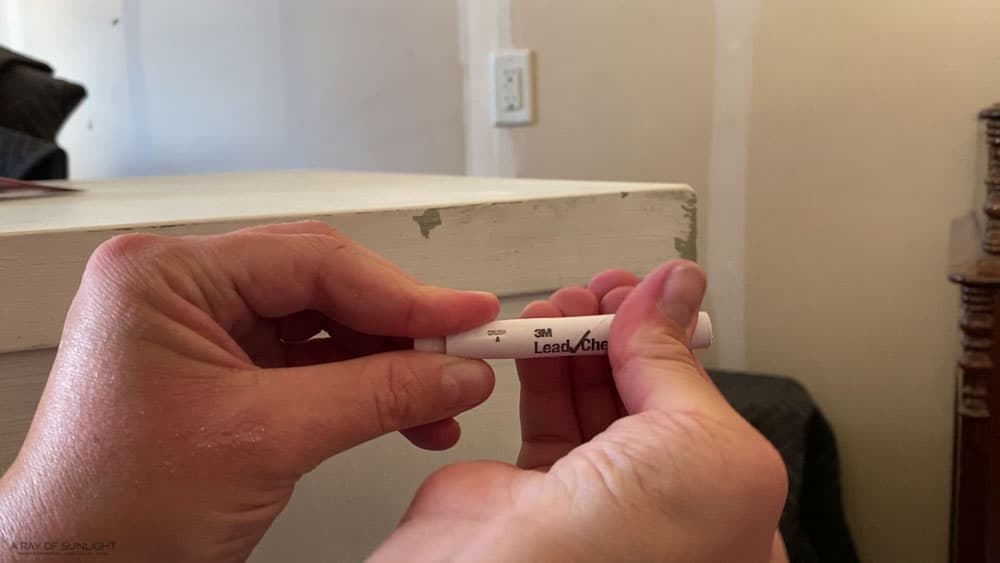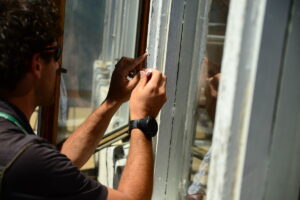If your home was built before 1978, there’s a chance that layers of old paint could contain lead. Lead is a toxic metal that was used to make paints more durable. It can pose serious health risks. These risks are extremely serious for young children and pregnant women. It can lead to serious health problems, such as developmental delays in children and learning difficulties. It can also lead to kidney issues in adults.
But the good news is that testing lead is easier than ever today. Today, we have options from simple DIY lead paint test kits to advanced professional inspection. These tools let homeowners quickly check whether their paint contains lead. It takes just a few minutes. But how exactly do these kits work?
In this blog, we’ll break down what’s inside a lead paint testing kit and how to use it safely to protect your home and family.
Why Test for Lead Paint?
Testing for lead paint is an important step to keep your home safe. Long-term exposure to lead can cause serious health problems. In children, it can affect the brain and behavior, while adults may have high blood pressure or problems with reproduction. There are also legal rules to follow. Many local laws require homeowners to tell buyers if lead is present in painted walls. Not following these rules can lead to fines if someone gets hurt. Lead paint is most often found in places that get a lot of wear, like window frames, railings, doors, or on surfaces with many layers of old paint. Knowing where to test helps you make sure your home is safe for everyone.
Types of Lead Paint Testing Kits
When it comes to detecting lead-based paint, there are several types of testing kits available.
Chemical Swab Test Kits
These are the most affordable kits for household use. They work by using a chemical reagent that reacts when it comes into contact with lead. It typically produces a visible color change to indicate its presence. Chemical swab kits are portable and easy to use. They deliver instant results. Their accuracy can be affected by surface condition and the number of paint layers.
Laboratory Test Kits
For homeowners seeking highly reliable results, laboratory testing is a more precise alternative. With these kits, you collect dust and send it to a certified lab for detailed analysis. Lab tests can detect even trace amounts of lead and confirm findings from rapid test kits. This method is often recommended for official documentation and large renovation projects.
X-Ray Fluorescence
This method is commonly used by certified lead paint inspectors. XRF analyzers use a handheld device that emits low-level X-rays to detect the presence of lead beneath multiple layers of paint. It doesn’t damage the surface. It’s fast and non-destructive. It’s highly accurate. It makes it the gold standard for large-scale inspections, but due to the equipment cost and need for professional operation, it’s not typically used for DIY purposes.
How to Test for Lead Paint at Home?
Here is the basic process for the DIY Lead Paint Test kit.
Preparing the Surface
Before testing, the area must be clean. You need to keep the dust away, so it’s important to wipe the surface gently with a damp cloth and let it dry. If the paint has several layers, use a small knife to expose all layers, because lead may be buried under newer paint.
Activating the Test
Most chemical kits come with an ampule containing the testing reagent. To activate it, you typically twist the tube until the inner chemicals mix and the swab tip becomes moist. This releases the active solution that reacts with lead.
Applying the Swab
The swab is rubbed firmly on the painted surface for several seconds. If lead is present in the paint, the chemicals in the swab will cause a color change. It is usually from yellow to pink or purple. It depends on the kit brand. This reaction happens quickly, within 30 to 60 seconds.
Interpreting the Results
After rubbing the swab, the color on the tip should be compared with the guide provided in the testing kit. If the results are unclear, it is recommended to collect a small sample of the paint and send it to a certified laboratory for confirmation.
Also Read: Lead in Water vs Lead in Paint
Cleaning Up Safely
When the test is complete, the swabs used should be discarded according to the safety instructions. Wash your hands thoroughly and avoid touching your face during testing. If lead is detected, do not attempt to sand or heat the paint. These actions can release dangerous lead dust into the air. Contact a licensed lead abatement professional for proper removal or containment.
Understanding Test Results
Understanding your lead paint test results is very important for keeping your home safe. If the swab changes color, like pink or red, it means lead is present. If there is no color change, it means no lead was found. Keep in mind that the old paint layers, while testing, can affect the results. If you are unsure, you should send a sample to a certified lab. Knowing the results helps you decide the next steps, like safely removing or getting help to deal with any lead paint in your home.
Accuracy and Limitations
Lead paint testing kits are useful, but they are not always perfect. The results can be affected by things like dirty surfaces. Results can be affected if the kit is not used correctly. DIY swab kits are quick and easy to use, but they might miss small amounts of lead. Professional testing, like X-ray machines or lab tests, is more accurate. It can find even tiny amounts of lead. It is a bit expensive, but the results are very reliable. Understanding these differences helps you know how much you can trust a DIY kit and when it’s better to call a professional.
Safety Tips for Homeowners
When testing for lead paint at home, safety is very important. Following these steps helps protect your family and keep your home safe.
- Always wear gloves and a mask to avoid touching or breathing in lead dust.
- Clean the area well before and after testing.
- Avoid sanding or scraping paint yourself, because this can release dangerous dust.
- Keep children and pets away from the testing area.
- After using a test kit, throw away swabs and gloves safely. Make sure to wash your hands thoroughly.
If lead is found, do not try to remove it on your own; contact a professional who is trained to handle lead safely.
Hire Certified Lead Inspectors for Lead Paint Testing in NYC
If you own a home in NYC, testing for lead paint isn’t optional. You need someone who’s an expert. Manhattan Lead Inspections has the best tools and experience to check your home safely. Whether it’s a small apartment or a large property, we know where to test and how to get reliable results fast.
Manhattan Lead Inspections offers professional lead paint testing that is affordable and far less stressful than waiting until lead becomes a serious problem. We protect your home and your family’s health. Our team provides full inspections and expert guidance based on the results, tailored to NYC homes.
So don’t wait for hidden leads to put your family at risk. Schedule a test with our certified experts today. Call Manhattan Lead Inspection.




